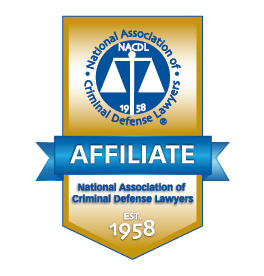A sex offender registry is a list indicating individuals convicted for sex crimes like rape and sexual assault. Being labeled as a sex offender means that you must register and renew the registration every time you relocate. The sex offender registry notified the public to be vigilant around you. Sex offender status is the most dreaded consequence of a sex crime conviction.
This status will continue to impact your personal and professional life long after you have completed your prison or jail sentence. Fortunately, you do not have to remain in the registry for a lifetime. You can petition the court for the removal of your name. Not all individuals can be removed from the California Sex offender registry.
The nature of the crime that put you on the registry and other individual factors will determine your eligibility. Unless your conviction is reversed, the path toward removal from this registry is challenging. You will require expert guidance to navigate your petition and secure a favorable outcome.
Petitioning The Court to Remove Your Name from the Sex Offender Registry
California operates on a three-tier system for sex offender registration under Senate Bill 384. The different tiers indicate the minimum amount of time you are expected to remain in the registry before you can be eligible for a removal:
Tier one
This tier of sex offender registration is reserved for less serious sex offenses. Some crimes under the tier one category include misdemeanor sexual battery, indecent exposure, and lewd conduct with a minor. Tier one registration is for crimes that are not violent and do not involve sexual contact.
For example, while indecent exposure can be sexually offensive, it does not involve touching someone or engaging in a sexual act with them. Under Tier one, you must remain registered for at least ten years before petitioning for removal.
Tier Two
You will fall under tier two registration if you face an arrest and conviction for a more serious crime than the ones under tier one. However, these offenses must not involve violence. Offenses under tier two include oral copulation with a child. Lewd conduct with a minor and sodomy of a child without the use of fear.
Children cannot consent to sexual acts. Therefore, even when you do not use force or violence, oral copulation or lewd acts with a person under fourteen years attracts a lengthy sex offender registration. In the tier two registry, the offender must remain in the registry for up to twenty years.
Tier Three
A tier three sex offender registration is the most serious. This registration involves relining with the sex offender status for a lifetime. You will suffer this consequence if you face a conviction for serious crimes like rape, forced penetration of a child, and sex trafficking, among others.
If you have committed a tier one or two sex offense, the court can mandate your registration under tier three based on the risk you pose to other people. You cannot have your name removed from a tier three sex offender registry unless your placement in the category is based on your risk.
Your sex offender registration does not terminate automatically when your minimum registration period elapses. You must file a petition in court to seek the removal of your name from the registry. If you have a subsequent sex offense, the court can extend your registration period.
Eligibility for Removal from the Sex Offender Registry
Whether or not you will have your name removed from the sex-offender registry depends on your eligibility. You are eligible for a removal hearing under Penal Code if you meet the following criteria:
- You were convicted for a non-violent sex offense. Not all sex crimes are eligible for removal from the registry. In California, you can be placed in the sex offender registry for minor sex crimes to serious and violent offenses. For example, a person placed in the registry for indecent exposure will have an easier time having their name removed than a person convicted of.
- You have not been convicted for more than one sex offense. You are ineligible to remove your name from the sex offender registry if you are convicted of multiple sex offenses.
- Completed all requirements. In addition to sex offender registration, the court may impose other sentences like fines, probation, victim restitution, and counseling. Before your name can be removed from the registry.
- You have completed the registration period. Under Senate Bill 384, there are three categories of sex offender registration. Tier one requires you to remain in the registry for ten years, while tier two requires up to twenty years of registration. Tier three sex offender registry is reserved for more serious sex crimes. This means that you will be required to register for a lifetime. When petitioning the court for removal, you must have fulfilled the registration for the minimum time.
- You are not in custody. Remaining in the sex offender registry can be detrimental to your life. However, the registration period elapses when you are released from incarceration or other commitments. Therefore, you cannot file a successful petition for removal unless you have served your prison or jail sentence.
- You are not on supervised release. Probation is a common sentence for defendants facing charges of sex crimes. Often, you will serve your probation after a certain period of incarceration. If you are currently on probation or parole, you are ineligible for removal from the sex offender registry.
Process of Removal from the Sex Offender Registry
Every person whose life is limited by sex offender registration can be thrilled by the idea of receiving relief from the registration. You can follow the following process to have your name removed from this registry:
Review Your Eligibility
The first step you must take when seeking to remove your name from a California sex offender registry is checking if you meet the eligibility. A skilled lawyer will help you assess each element of the eligibility. If you have not completed your probation or are still serving probation, you should meet this requirement before filing a petition to avoid a denial. Additionally, you must have completed the minimum registration requirement depending on the tie of your registration.
File the Petition
When you verify that you meet the eligibility, you can file your petition. Often, a petition for removal from a sex offender’s registry is made to the jurisdiction where you live.
Wait for Court Review
Once you have submitted the petition, the court will take a while to review your case and determine whether you deserve the removal. They can automatically throw out the petition or schedule a hearing by checking your criminal history and performance through the registration period.
Attend the Removal Hearing
You must understand that the State is part of your petition, and the prosecution or district attorney must be notified of your petition. The prosecution may contest your petition fight to have you remain in the offender’s register. At your removal hearing, your defense lawyer and the prosecution can provide evidence to support their side of the petition.
If the prosecution wants you to remain in the registry, they must establish why your name should not be removed. This is by showing that you are a danger to society. Remaining in the registry means that people are notified of your threat during your employment search.
After all the evidence has been presented, the judge decides to grant or deny your removal petition. If your request is approved, your lawyer will help you communicate with local law enforcement agencies to remove your information from public access.
However, if the judge denies the petition, you may have to wait up to two years before filing a new petition. Some reasons your judge could deny your petition include:
- You do not meet the eligibility. If you have not met all requirements needed for removal from the sex offender’s registry, your petition will be denied. Before filing the new petition, you should ensure that you have corrected the mistake.
- The prosecution is successful in proving that you are a threat. If the judge agrees with the prosecution on the high risk you pose to others, your name will remain in the registry.
Find a Reliable San Diego Record Expungement Attorney Near Me
A minor mistake can land you in serious trouble. For most sex crimes, registration and annual renewal of the sex offender registry are mandatory. This will not only cause social stigma but can also dim your educational and employment opportunities.
Fortunately, there are ways to remove yourself from the registry, like filing a petition under Senate Bill 384. Navigating the removal of your name from the sex offender registry is complicated since the system is designed to punish you for your sex crimes. Therefore, hiring and retaining a skilled lawyer is critical.
At Record Expungement Attorney, we understand the devastation you must have when carrying around the sex offender status. We offer top-notch legal guidance to all our clients seeking to have their names removed from this registry in San Diego, CA. Contact us at 619-577-4081 and allow us to guide you through the complicated process.








